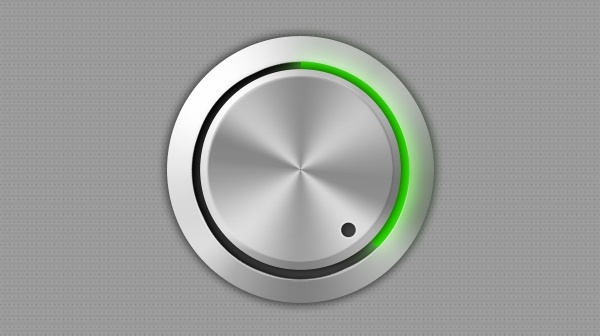

If you cannot afford implementing a true exponential curve, use this simple formula for your volume slider. Table 1 shows similar approximations for other dynamic ranges. In other words: amplitude multiplication factor = x 4. This approximation is the 4th power of the volume slider's position x scaled to the interval.
If for some reason you do not want to implement a full exponential function, you can instead rely on a good all-round and computationally cheap approximation that fits the typical 60 dB range of low-to-medium powered consumer audio systems. 2 dB is pretty much ideal as a step size 3 dB is also OK if fine control is not needed. Volume changes below 1 dB are not noticeable and changes above 3 dB are too coarse. If you offer a way to change volume by discrete increments, like pushing buttons or turning a mouse scroll wheel, make sure the increments are somewhere between 1 dB and 3 dB. Add a linear roll-off near zero if you want to ensure perfect silence at volume setting 0. Again, you should probably use the parameters for 60 dB range. x) for various figures of loudness ranges x is the slider's relative position and y is the actual scale factor for the sound waveform, if both these values are within the interval. Table 1 shows some practical values of parameters a and b in the formula y = a. A sensible assumption for consumer equipment is that it will have a usable range of 60 dB. Unless you are working on a high-end product with known specifications, you will need to make some guesses and approximations. The problem with this is that one can in general only make vague assumptions about what equipment the user will be using. x), with its lowest setting corresponding to ‘silence’ (typically 30 dB(A) for consumer products) and its highest setting the maximum loudness the user's audio equipment produces. The ideal volume slider follows an exponential curve y = a. A percentage is only acceptable if it maps to a range of dB values, for instance 0% = -60 dB and 100% = 0 dB. 
A volume control should not be based on percentages, because this implies linearity.In practice, a ‘silent’ room will be at ☓0 dB(A). To measure absolute loudness as perceived by humans, the dB(A) scale is often used, with 0 dB(A) the loudness of the most silent perceivable sound. Multiplying amplitude by a certain factor means adding a certain amount of dB. Positive dB values mean amplification, negative values attenuation. For a relative amplitude level x, the dB value equals 20*log 10( x). That is why all audio equipment worth its name uses the dB scale to indicate volume and gain settings. Linear volume sliders are a nuisance because human perception of loudness is not linear at all, it is logarithmic. Finding the not-so-ideal-but-still-quite-good curveįor those with little time, here is the essence of this text compressed into a few sentences:.






 0 kommentar(er)
0 kommentar(er)
